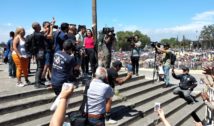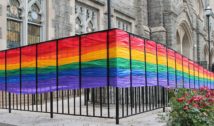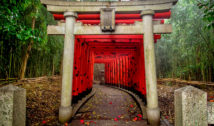
Islam in American Education: How Some Cities Are Reacting to Muslims in Trump’s America
- By Derek Welch --
- 15 May 2017 --

Muslim schools reach out to neighboring schools to ease tensions, a Florida school keeps its history textbook containing a chapter on Islam and an Islamic school in NJ receives backlash.
To overcome the negative perceptions present in Trump's America, the Council of Islamic Schools in North America (CISNA), the sole Muslim schools' accrediting authority, is making changes to its curriculum. Islamic schools in New York will now arrange meetings between their own enrolled students and students at secular or Christian educational institutions. CISNA has currently 78 member or accredited schools scattered over 24 U.S. states.
Islam in American Education: How Some Cities Are Reacting to Muslims in Trump’s America[/tweetthis]
This decision was taken in the light of the fact that Americans have a greater chance of viewing Muslims as extremists if they personally are not acquainted with one. About one percent of Americans follow the Islamic faith. These findings by Pew Research Center also found that nearly 60 percent of Americans who are acquainted with Muslims believe there is zero or minimal support of extremism among them in contrast to 48 percent of Muslims who do not know any Muslim. CISNA has asked its educators to start more volunteer projects that are beyond the Muslim community. The educators must attend meetings with local government. They also must create an alumni database to track the success of their graduates.
Arguably, in Brevard County, Melbourne, Florida, anti-Muslim feelings may be the reason behind the opposition to a history textbook. School children will continue to read the Pearson textbook, where, as its many critics say, Islam is painted in an unaccounted for, overly positive light. The fracas drew the attention of CAIR and ACT for America local chapters. Those opposed to the book were concerned the chapter ignored Islam’s “true history.” They allege it favorably portrayed Mohammed and Islam's treatment of women. According to Philip Stasik, president of the Space Coast Progressive Alliance, the debate was an “organized challenge against the Muslim community.” Those who favored the textbook argued that the reasoning behind the debate is bigotry, not accuracy.
I love seeing my alma mater (@stanthonysalum) promote friendship & understanding https://t.co/VAoTrNce9J #highschool #religion #highschool
— Christine (@mynameispurpose) May 15, 2017
The reaction of the Muslim community was that critics of the concerned textbook are only trying to increase and distribute Islamophobic ideas. This is being done by quoting faulty or unreliable sources as per Rasha Mubarak of CAIR-Florida, the regional coordinator of the organization. She said the right wing has no interest in the performance of their students. They are using the students to full their sole ambition of an anti-Islamic agenda.
New legislation was passed in the Senate and in Florida would hasten the review process presently followed for textbooks. A bill sponsored by Governor Rick Scot would permit any residents, not limited to parents, to petition any textbook which seemed inappropriate to them.
In a similarly oppositional move to the Muslim community, a proposal to build a mosque and a private Islamic school on Route 9 in Toms River, New Jersey is being protested. The 50,040-square-foot building would replace an existing mosque. Chairman Mohamad Elmasry says that the school would aid in filling a “void” and increasing demand for Muslims in the area. Elmasry also said that such opposition to new construction or expansion was unprecedented. Edward Liston Jr., attorney to the four families who are opposing the construction says, “they want to build a pretty big building on a parcel that’s less than half the size of the parcel that’s required under the ordinance.” Another objection is the new school would cause a greater amount of traffic in the area. However, Elmasry says that the argument is weak because the area is already populated with commercial businesses, and because the proposed school would have only up to 140 students. There is also an existing school in the area (Joeseph A. Citta Elementary School) and an Indian temple up the street.



















